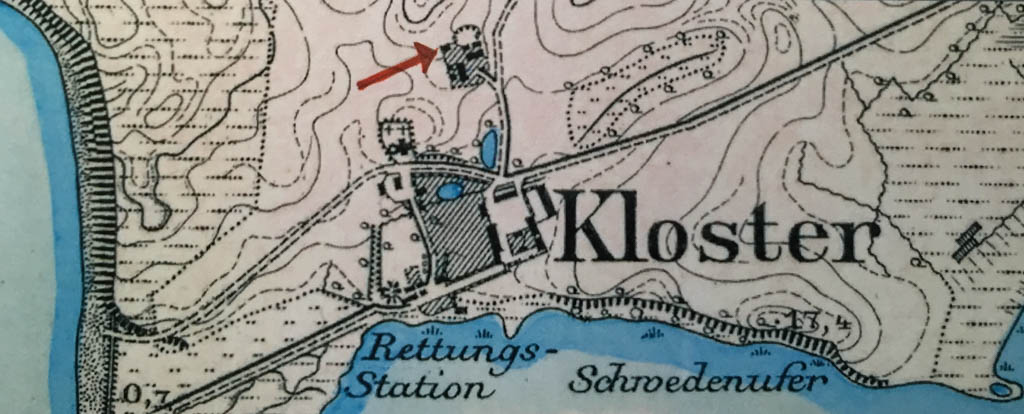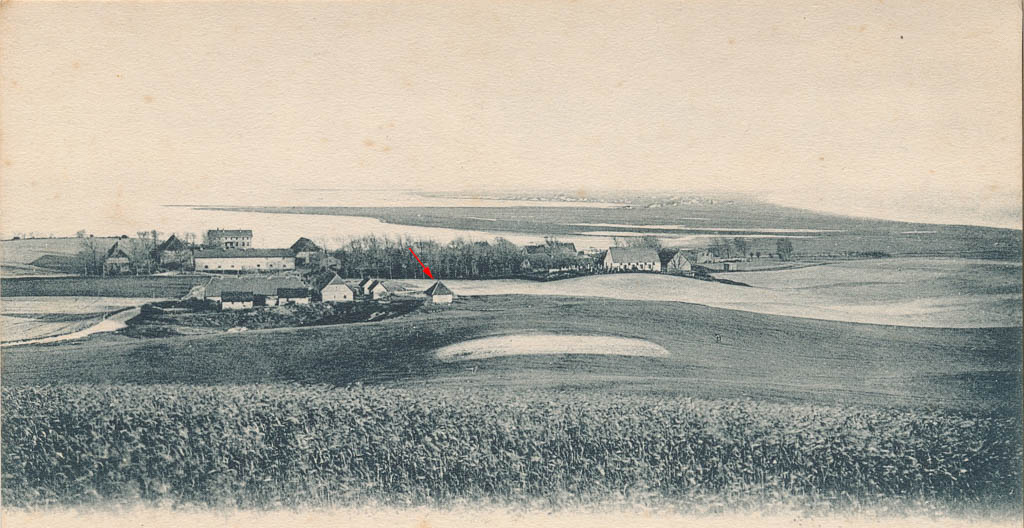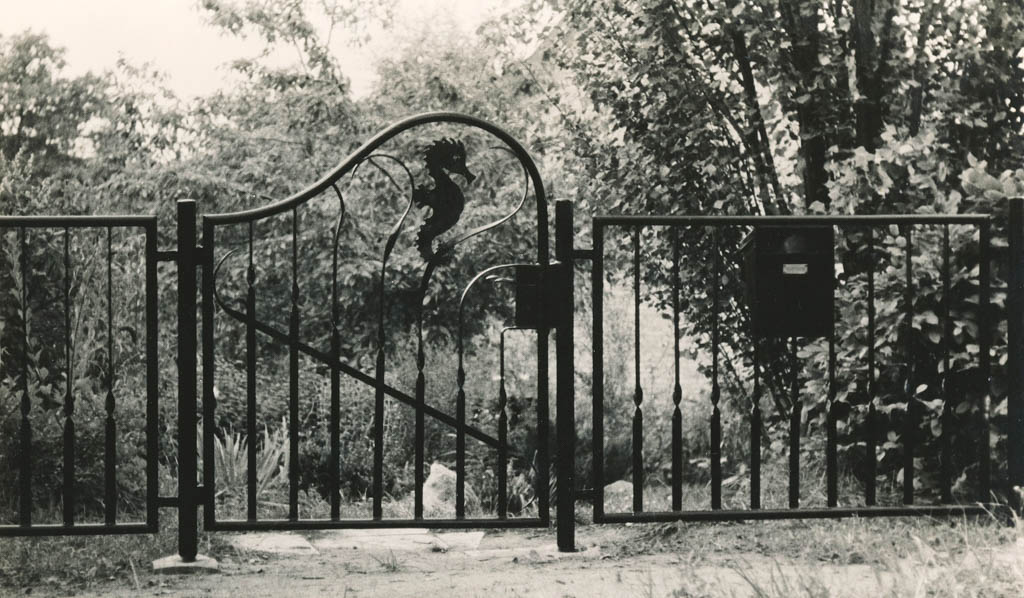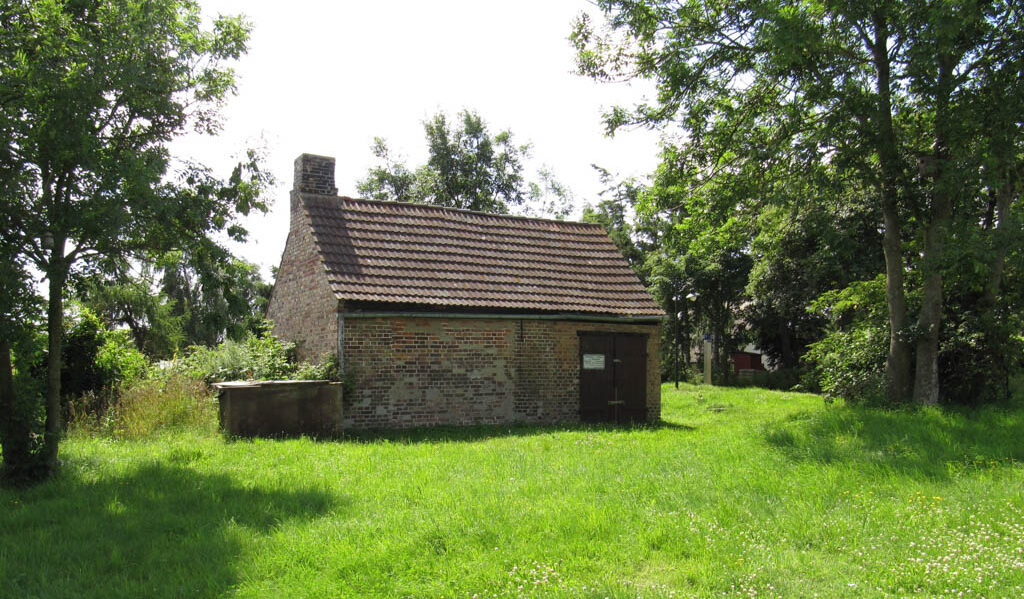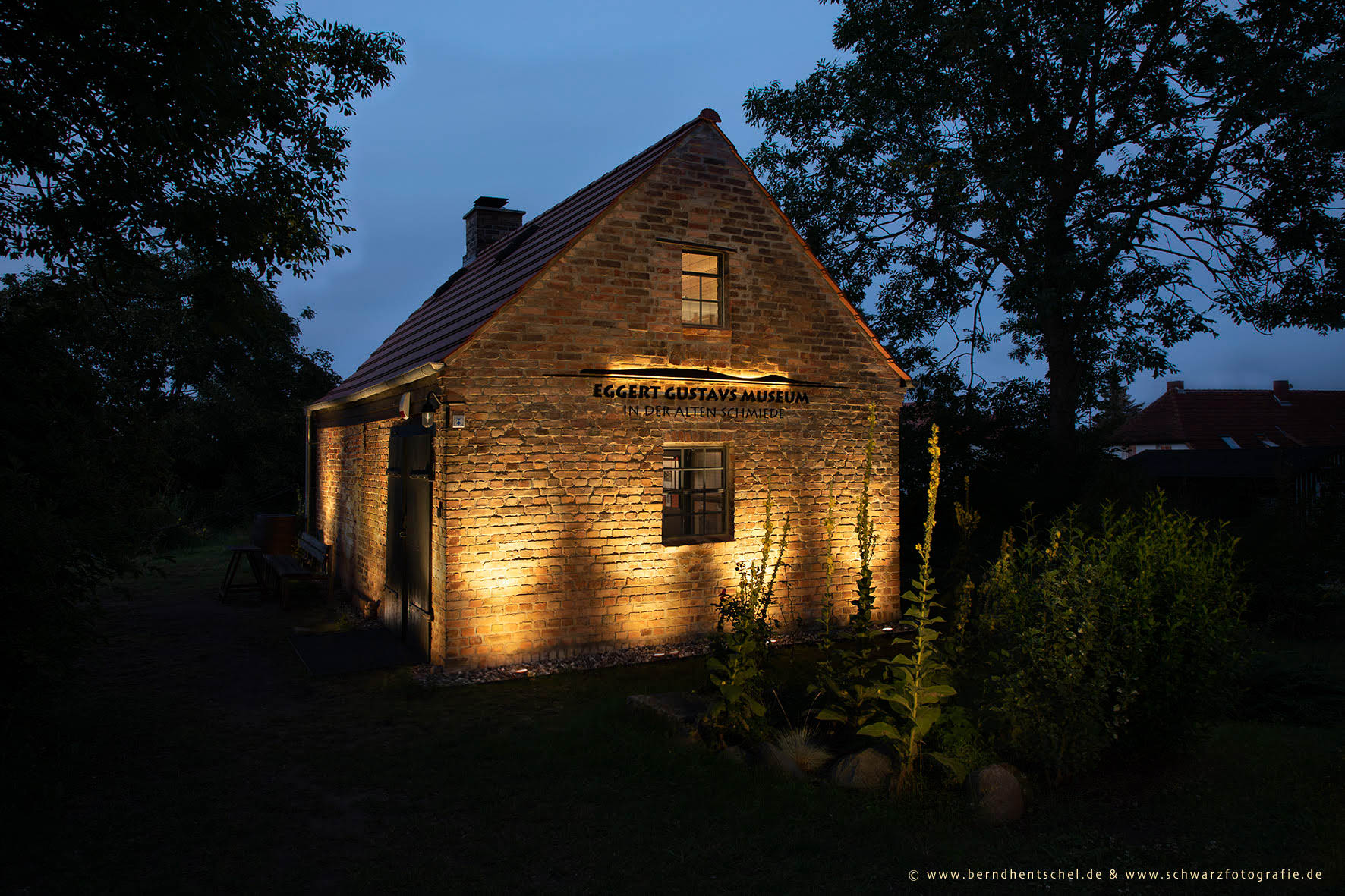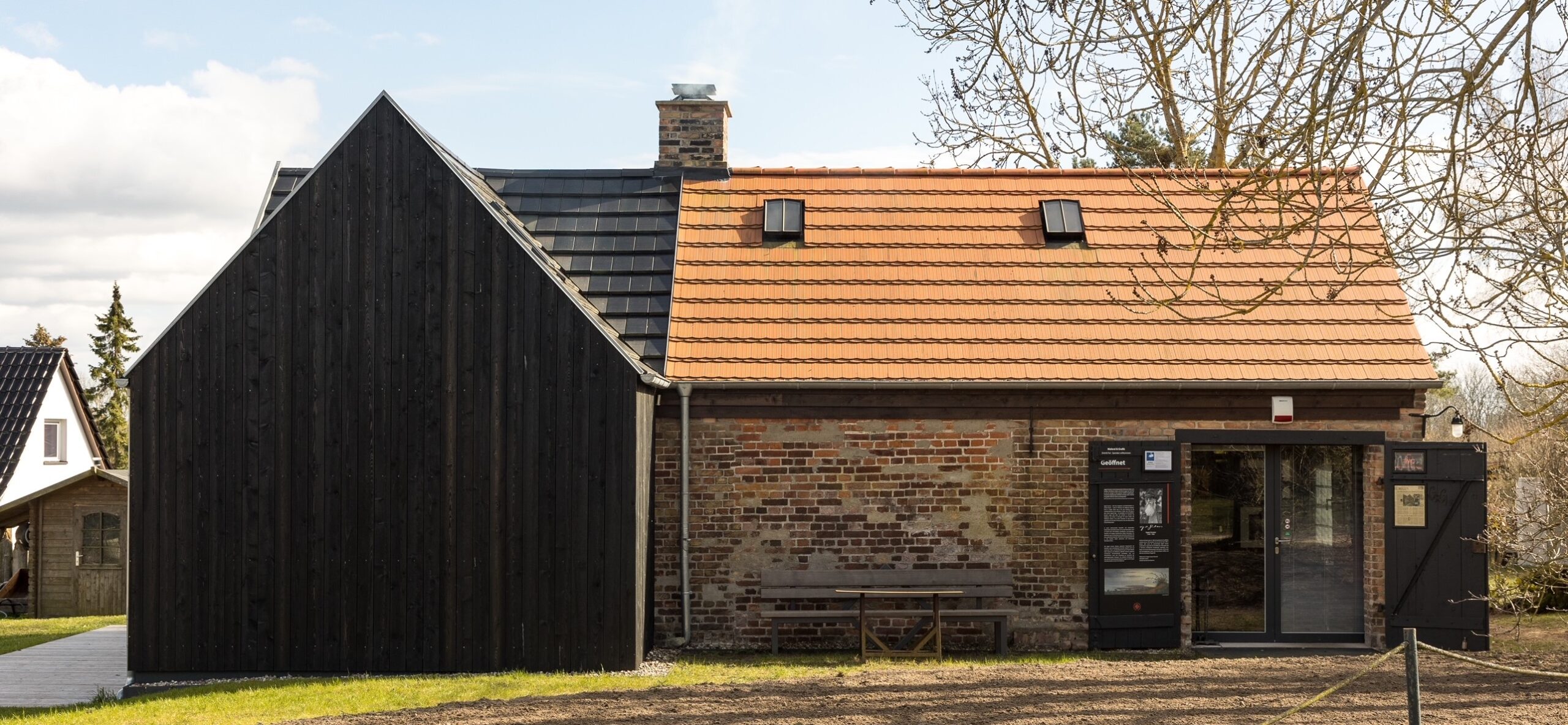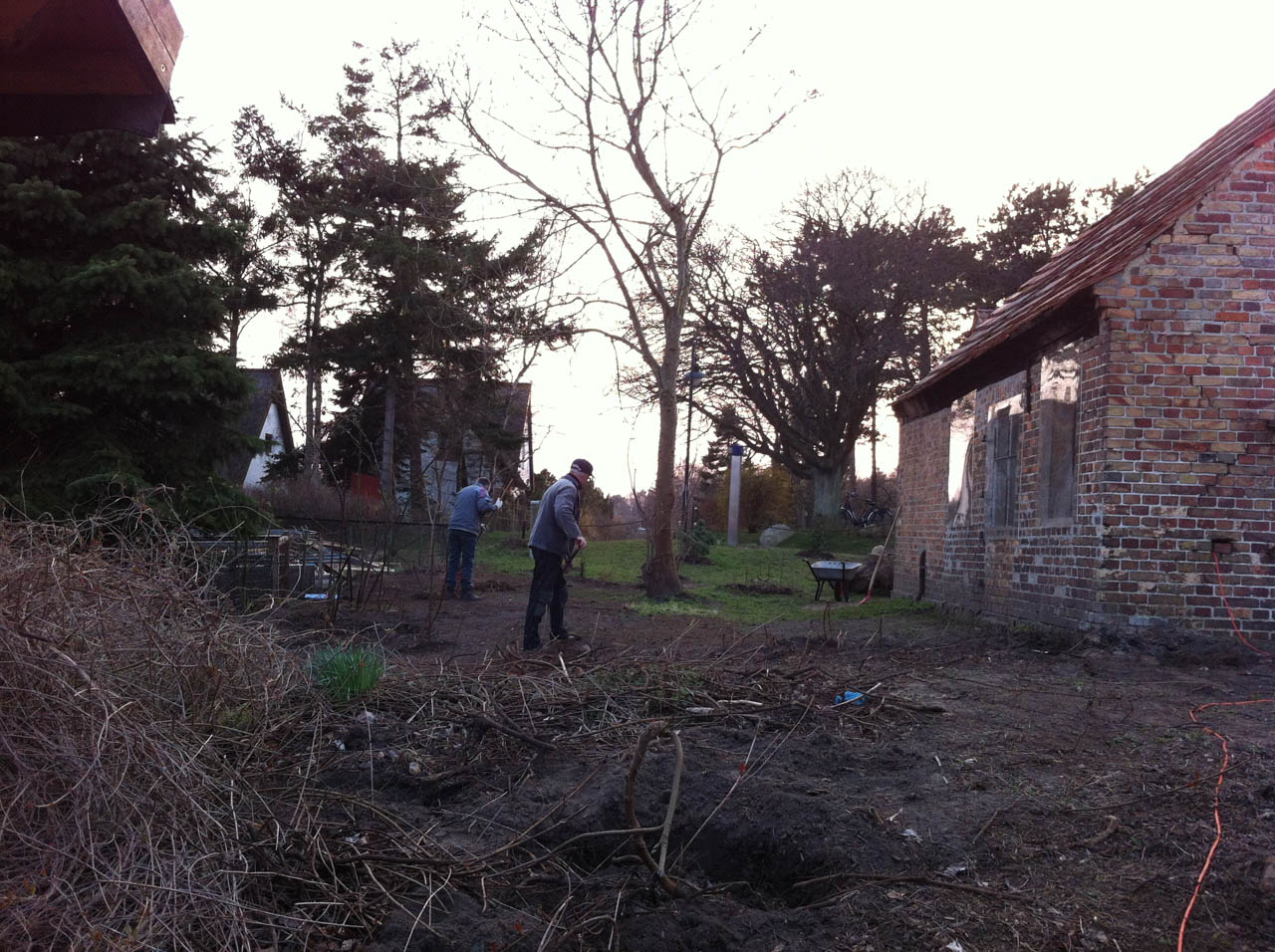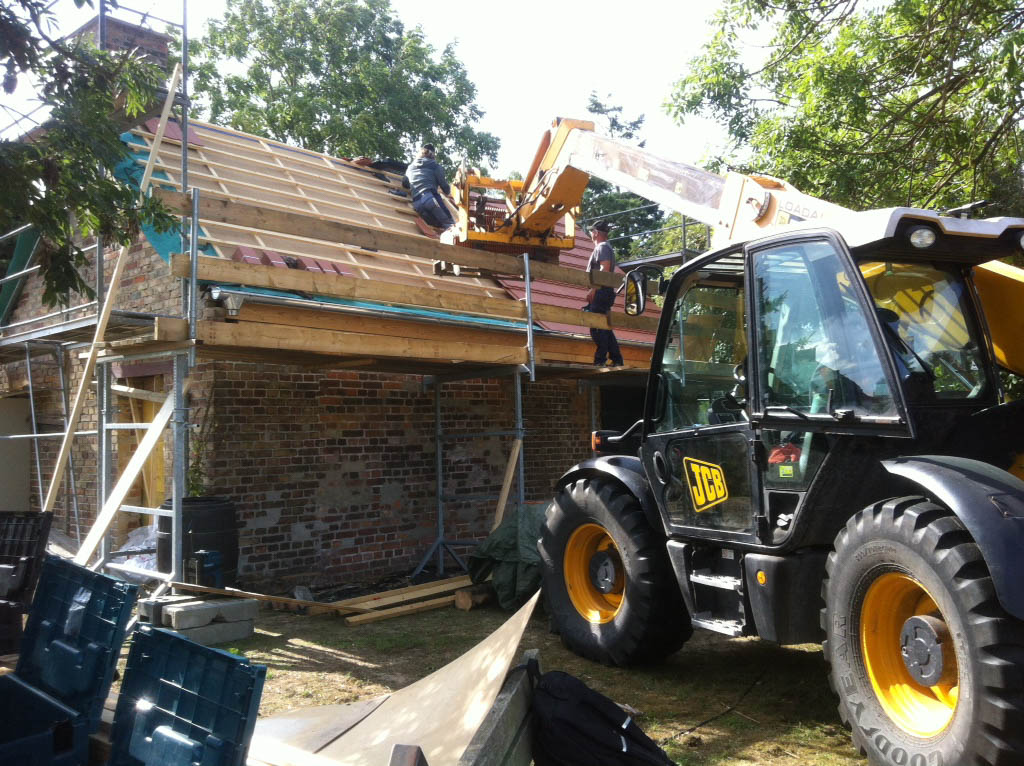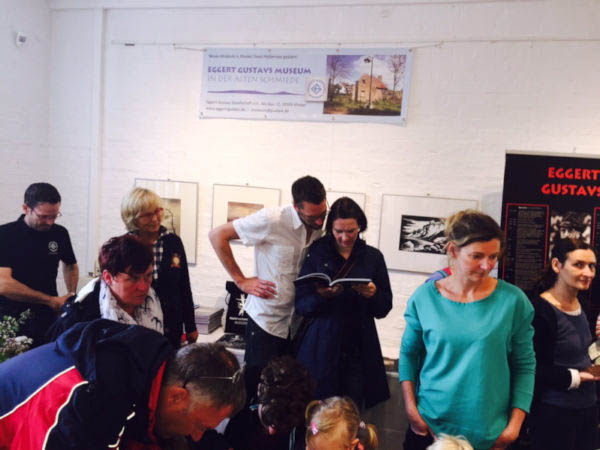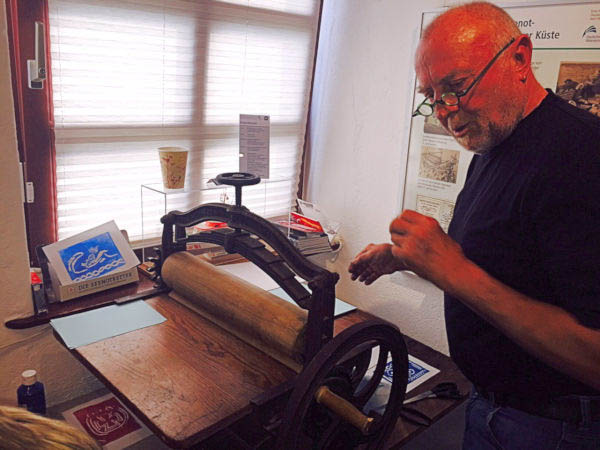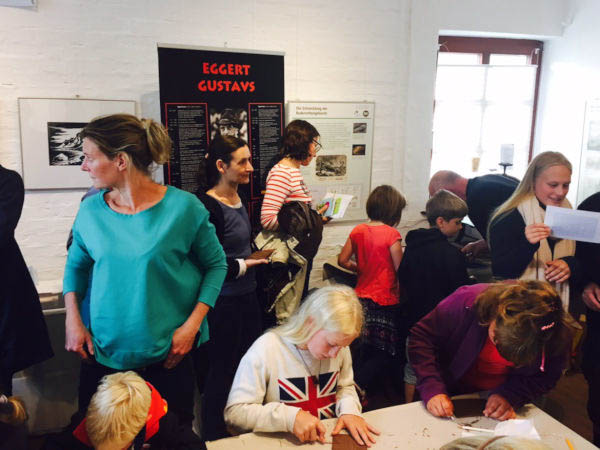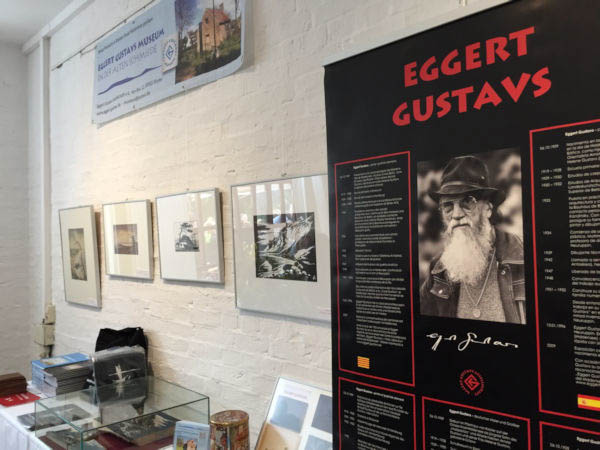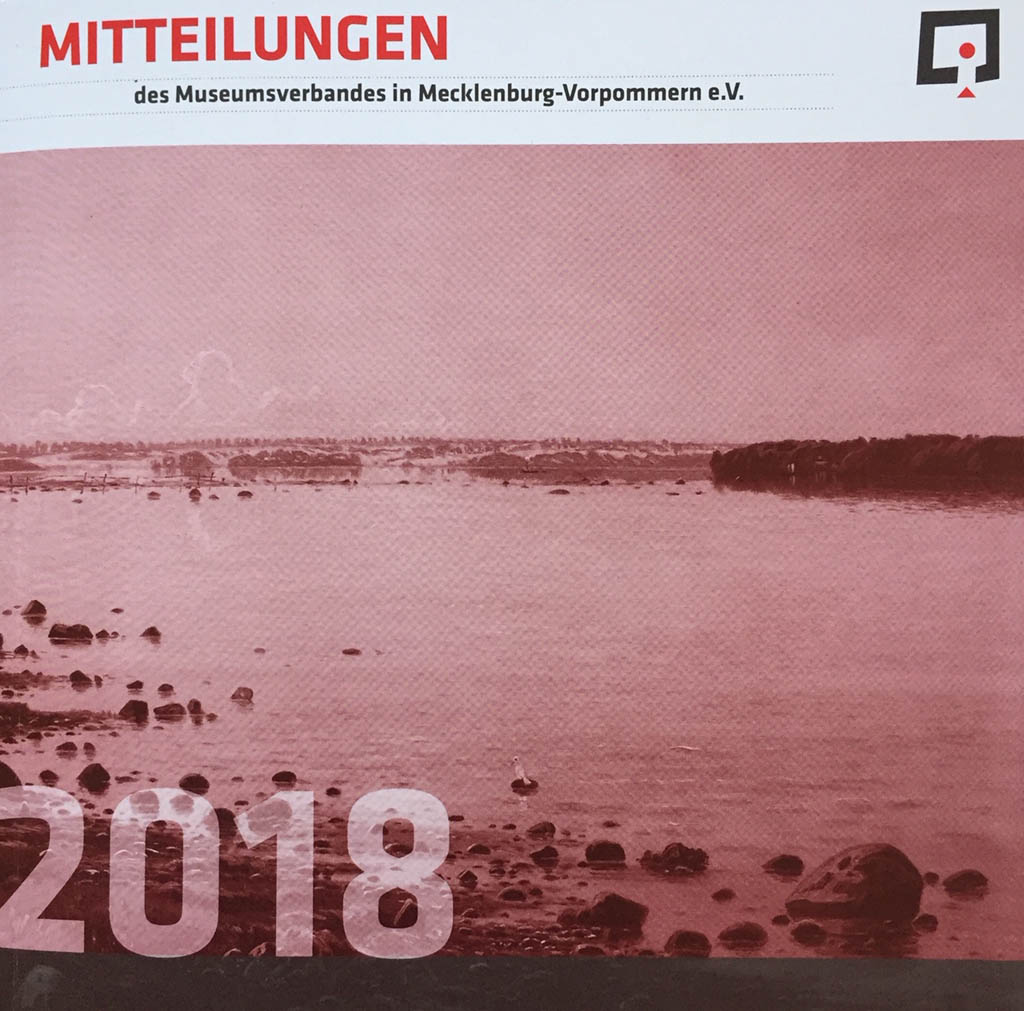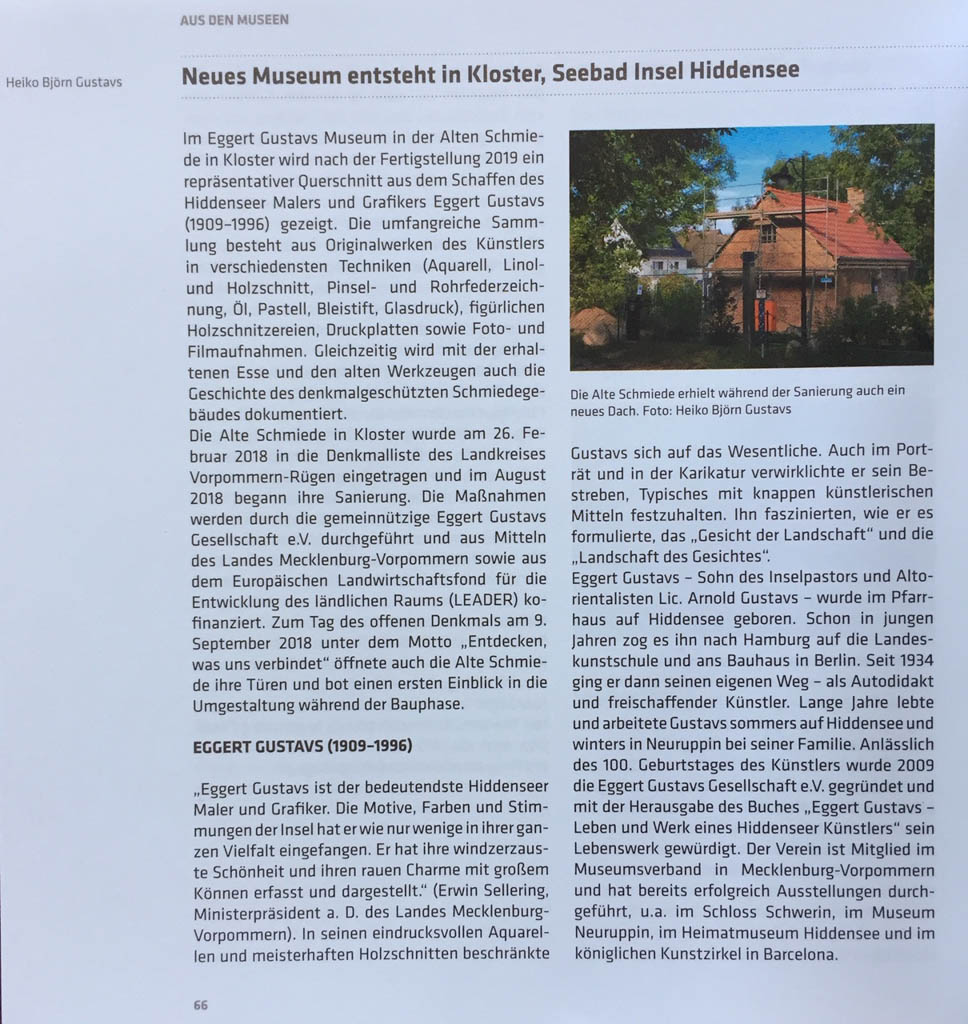The Old Blacksmith's Shop on the Island of Hiddensee
The blacksmith's craft is one of the oldest crafts. In the past, a blacksmith's shop was found in almost every village. Blacksmiths worked metals with the help of fire and striking tools. They needed strength, endurance, and an extensive knowledge of the different types of metal and their properties. Especially gifted craftsmen could be appointed to become estate or court blacksmiths. But there were also traveling blacksmiths, the predecessors of the military blacksmiths later used in war. On the Island of Hiddensee, blacksmiths mainly shoed horse hooves, repaired tools, and carried out work around houses and farms.
The original blacksmith’s shop of the Cistercian monastry (1296–1536) was located to the south of the church (consecrated in 1332, reconstructed in 1780) and the parsonage (built 1850–1851) in the present parsonage garden.
“The blacksmith’s shop of the monastery was supposed to be located at the older parsonage, i.e. in the present parsonage garden at the old linden tree and the old nut tree. […] The old parsonage, which was already mentioned by Wackenroder about 1710, stood closer to the bay in the direction of north to south near the thick old linden tree and the old walnut tree in the present parsonage garden. Previously, a blacksmith’s shop had been there.” (Jürgensohn, 1924)
(Jürgensohn, 1924)
Die Alte Schmiede wurde zwischen 1836 – 1886 nördlich der Gutsarbeiterhäuser erbaut – mit quadratischem Grundriss und einem Zeltdach. Sie wurde um 1950 in westlicher Richtung vergrößert und erhielt damit ihr heutiges Aussehen.
The most important part of the blacksmith’s shop was the forge, the open fireplace in which the glowing forge coal (fat coal, a high-quality hard coal) was heated by means of a bellows to maximum temperatures of about 1250 °C (2282 °F) to heat the workpiece. Above this fireplace was the chimney, which served as an outlet for smoke and sparks.
The old, huge, hand-operated bellows in the attic was replaced by an electric fan when electricity came to the Island of Hiddensee in 1927.
To form a given workpiece, blacksmiths had numerous tools at their disposal, among them anvil, hammers, tongs, drills, and grinders. The available transmission drill was powered by an electric motor with a leather belt in the attic.
Together with the blacksmith, Eggert Gustavs forged – according to his own design – the iron-wrought garden gate for his property in Neuruppin. The Old Blacksmith’s Shop was actively used until 1989 and remained unused the years thereafter.
After many years of preparation for creating a museum, the Eggert Gustavs Gesellschaft e. V. began with the restoration work of the listed blacksmith’s shop in 2018, which was suported by the European Union, the State of Mecklenburg-Vorpommern, the Church, and many private donors.
Acknowledgements
Wir bedanken uns bei der Evangelischen Kirchengemeinde Hiddensee und der EWE-Stiftung für ihre herausragende finanzielle Unterstützung.
Besonderer Dank gilt Silvia Schmidt für die Initiative zur Vereinsgründung und ihre langjährige Freundschaft und Unterstützung, sowie dem Architekten Dr. Mathias Buss und dem Projektentwickler Wolfgang Kempf für die Erarbeitung der LEADER Förderanträge, die Planung und Organisation der Bauarbeiten sowie die fristgemäße Fertigstellung.
Unser Dank gilt auch den Baumeistern Norbert Ungethüm und Torsten Steinborn sowie dem Schmied Silvio Höhne für ihren besonders engagierten Einsatz an diesem Objekt. Ebenso herzlichen Dank sagen wir dem Dachdecker Karsten Siebler, dem Tischler Achim Wolff und den Elektrikern Bodo und Martin Stripling für ihre hochwertige Arbeit.
Dem Pastor Dr. Konrad Glöckner, dem Rechtsanwalt Dr. von Bosse, dem Denkmalpfleger Sommer-Scheffler, dem Diplom-Restaurator Wolfram Vormelker, der LAG Rügen, dem Landkreis VR und dem Land MV danken wir für ihre Unterstützung, durch die die Förderung erst möglich wurde.
Für die guten Ideen danken wir dem Vereinsvorsitzenden Karsten Gustavs, dem Architekt BDA Torsten-E. Gustavs, für die gelungene Gestaltung Bernd Fischer und für die Erstellung der Homepage Sebastian Mandsfeld. Allen Mitgliedern der EGG gebührt ebenfalls großer Dank für die jahrelange und andauernde Unterstützung und Mitarbeit.
Ganz besonderer Dank gilt den Parlamentarischen Staatssekretären Anette Kramme, MdB, und Heiko Miraß, MdL, dem Vorstand der twsd AG, sowie allen, die daran mitgewirkt und zur öffentlichen wie privaten Förderung beigetragen haben. Nur gemeinsam konnten wir dieses ausgezeichnete Ergebnis erreichen.
The Eggert Gustavs Museum for the first time participated with its own booth at the museum festival of the Förderverein des Heimatmuseums (Friends of the Local History Museum) at the local history museum in Kloster on 29 July 2015 from 1 p.m. to 6 p.m. From 3 p.m. to 5 p.m., the making of linocuts was on the program:
“Der Hiddenseer Künstler Eggert Gustavs hat unter anderem wunderbare Linol- und Holzschnitte angefertigt. Einige Originale werden auf dem Museumsfest präsentiert. Unter der Anleitung des Bildhauers Jo Harbort kann man von Gustavs inspiriert seinen eigenen Linolschnitt herstellen.“
The interest was huge, especially among the children.

